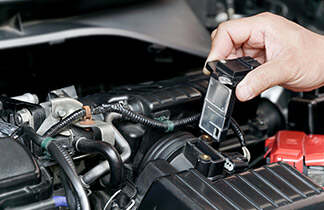Email format error
Email cannot be empty
Email already exists
6-20 characters(letters plus numbers only)
The password is inconsistent
Email format error
Email cannot be empty
Email does not exist
6-20 characters(letters plus numbers only)
The password is inconsistent


Your Ultimate Guide to Replacing a Mass Air Flow Sensor
Is Your Car Acting Up? The MAF Sensor Might Be the Culprit
Is your vehicle experiencing mysterious performance issues? Modern engines rely on precise air-fuel mixtures, and at the heart of this delicate balance lies the Mass Air Flow (MAF) sensor. When this critical component fails, you might notice:
- 20-30% reduction in fuel efficiency
- Rough idling that shakes your steering wheel
- Sluggish acceleration when merging onto highways
- Unexplained engine stalling at stoplights
- Illuminated check engine light (Code P0101-P0104)
Understanding Your MAF Sensor's Vital Role
The MAF sensor acts as your engine's air traffic controller, measuring precisely how much air enters the combustion chamber. Here's why it matters:
Key Functions:
- Measures air density and volume 200 times per second
- Calculates optimal fuel injection quantities
- Maintains ideal 14.7:1 air-fuel ratio
- Protects catalytic converter from damage
Diagnosing MAF Sensor Failure
Before replacement, confirm the MAF sensor is truly faulty:
3 Simple Diagnostic Tests:
- Visual Inspection: Check for cracked housings or damaged wiring
- Voltage Test: Use a multimeter to verify proper signal output
- Disconnect Test: Drive without sensor connected - improved performance indicates failure
Step-by-Step Replacement Guide
Time Required: 45-90 minutes | Difficulty: ★★☆☆☆ (Beginner-friendly)
Tools You'll Need:
- Phillips head screwdriver
- Torx bit set (size varies by vehicle)
- MAF sensor cleaner ($8-15)
- Anti-static gloves
Replacement Process:
- Disconnect negative battery terminal
- Locate MAF sensor in air intake duct
- Remove electrical connector (press release tab)
- Unscrew mounting bolts (keep track of small hardware)
- Gently remove old sensor - avoid touching sensitive elements
- Install new OEM-quality sensor
- Reconnect electrical connection
- Reset ECU by disconnecting battery for 15 minutes
- Test drive to confirm proper operation
Pro Tips for Success
- Always use MAF-specific cleaner - regular brake cleaner causes damage
- Handle new sensor by edges only
- Consider replacing air filter simultaneously
- Allow engine to complete full relearn cycle (50-100 miles)
When to Call a Mechanic
While 85% of MAF replacements are DIY-friendly, seek professional help if you encounter:
- Severe corrosion in electrical connectors
- Damaged wiring harnesses
- Persistent error codes after replacement
- Hybrid/electric vehicles requiring special protocols
Cost Breakdown: DIY vs Professional Service
| Component/Service | Average Cost |
|---|---|
| OEM MAF Sensor | $90-$250 |
| Aftermarket Sensor | $50-$180 |
| Mechanic Labor (1-1.5 hrs) | $120-$200 |
Maintenance Tips to Extend MAF Sensor Life
- Replace air filter every 15,000 miles
- Clean sensor every 30,000 miles
- Avoid oil-coated air filters
- Fix vacuum leaks promptly
FAQs: Your Top MAF Sensor Questions Answered
Can I clean instead of replace my MAF sensor?
Professional technicians report successful cleaning in 60% of cases using CRC MAF Cleaner. However, sensors with damaged heating elements require replacement.
How long do MAF sensors typically last?
Average lifespan is 80,000-120,000 miles. Vehicles driven in dusty environments may need replacement as early as 50,000 miles.
Will a bad MAF sensor damage my engine?
Prolonged use of a faulty sensor can lead to catalytic converter failure ($1,000+ repair) and piston ring wear.
Final Thoughts
Replacing your MAF sensor is one of the most cost-effective repairs you can perform to maintain peak engine performance. By following this guide, you'll not only save money but also gain valuable insight into your vehicle's operation. Remember - proper MAF sensor function is crucial for meeting emissions standards and ensuring your car runs cleanly and efficiently for years to come.

